Limnonectes conspicillatus
—
Matang Creek Frog
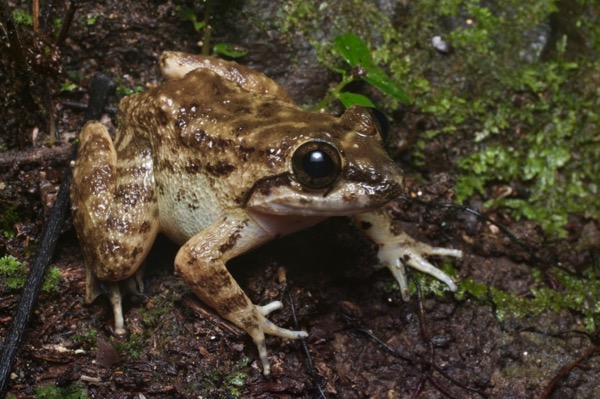
Limnonectes conspicillatus was originally described in 1872, but later lumped in with the rest of the Limnonectes “kuhlii” species complex. In 2017 it was resurrected as a distinct species, distinguishable from similar-looking Limnonectes species by details of its toe webbing, size, teeth, and habitat preferences.
The paper that restored Limnonectes conspicillatus to its former glory came out after my first visit to Malaysia, so I had earlier placed this and my other 2017 sightings here under Limnonectes “kuhlii”.
My Travelogues and Trip Lists page includes a complete list of the herps I saw in the wild on this trip to Malaysia, as well as a travelogue of the trip.
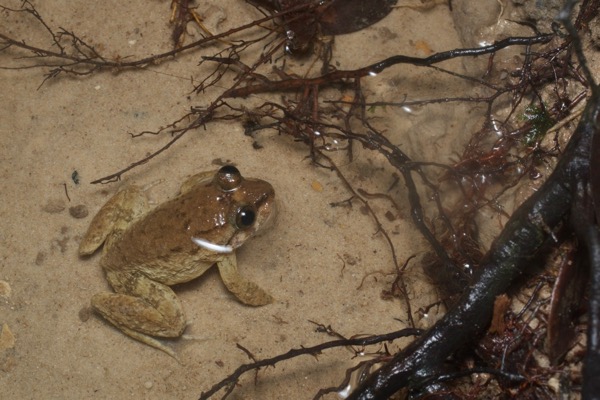
I think this frog has enough toe webbing to rule out Limnonectes hikidai and Limnonectes kong.
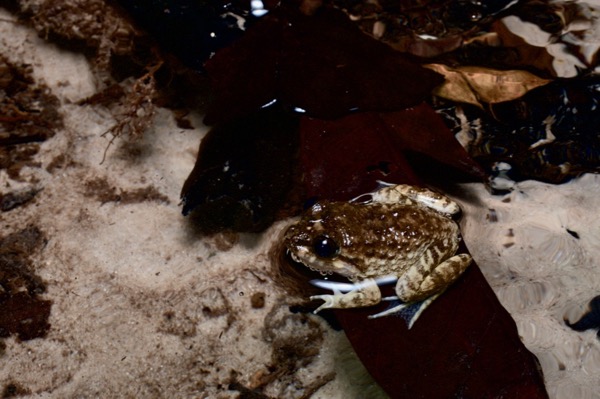
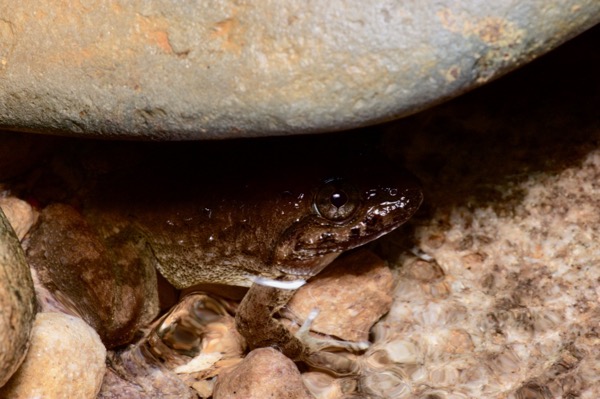
Some of these frogs would sit in plain sight in the middle of the creek, while others would try to hide themselves under overhanging rocks.
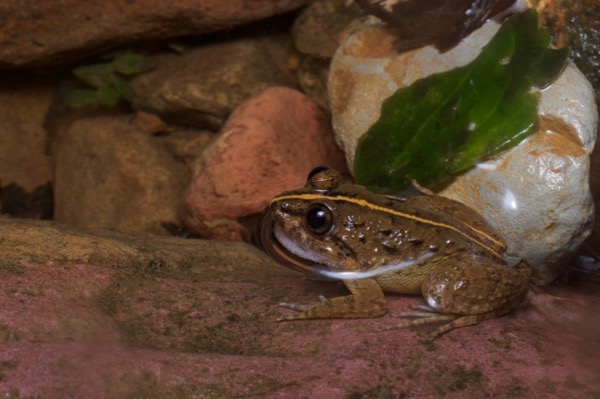
Older references used to claim that you could use the presence or absence of vertebral stripe on this frog to distinguish one closely-related species from another. But no longer. Now striped and stripeless alike are tossed into the same taxonomic bucket.
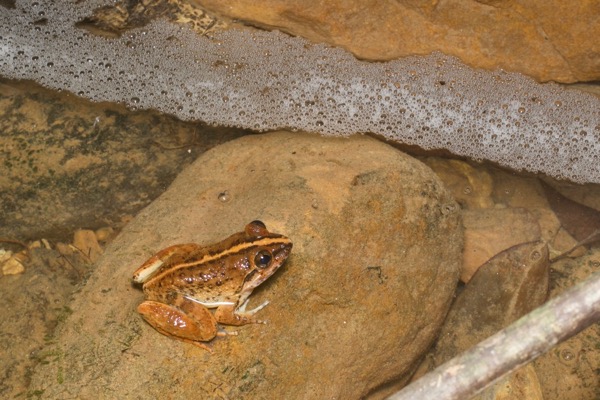
This frog looks like a twin of the one above, but was in a different part of Sarawak. Even thought I'm not completely sure of any of the IDs here, due to the fairly subtle differences between different species in this group, I would be willing to bet that this frog and the previous one belong to the same species.
Online references:
- Limnonectes conspicillatus account on Frogs of Borneo
- J. Maximilian Dehling & D. Matthias Dehling, 2017. A new wide-headed Fanged Frog of the Limnonectes kuhlii group (Anura: Dicroglossidae) from western Borneo with a redescription of Rana conspicillata Günther, 1872